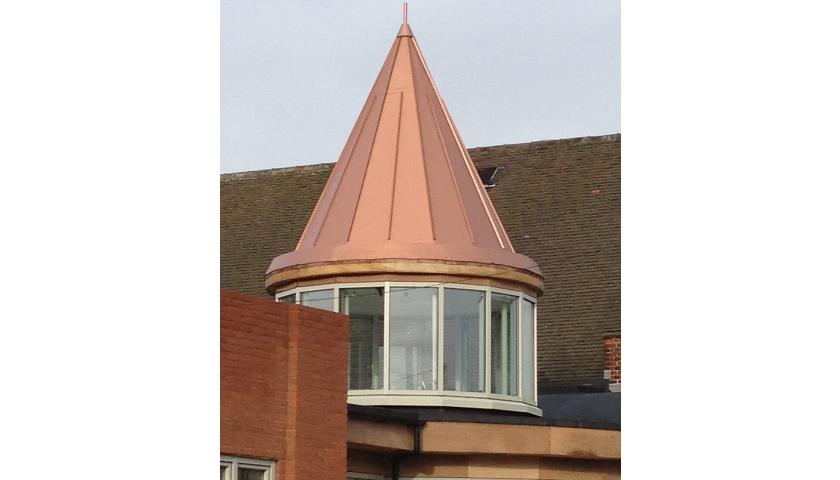Copper Vs Synthetic
Copper has been a versatile and prestigious building material for centuries. Eye-catching, hard-wearing and recyclable, it ticks lots of boxes for both aesthetics and practicality. But amongst its many advantages, there are some significant issues with specifying copper as a construction material in any sizeable quantity. Indeed, when it comes to designing a roof, the pitfalls of specifying copper can sometimes outweigh the benefits.
The first – and often biggest – issue is cost. Copper is a material that will offer excellent longevity, but it can substantially increase the build costs of a project. Using a synthetic alternative costs 50-60 per cent less per square metre, which, for a larger roof area, equates to a saving of thousands of pounds.
The high monetary value of copper also creates risk following completion. Like lead, copper is often stripped from buildings to be re-sold. For example, at Leigh Road Baptist Church in Leigh-on-Sea, thieves stole the copper used to refurbish the spire just before the scaffolding was removed. To protect the church from further incidents of theft, the spire and cupola were then refurbished using Soprema’s Flagon Copper Art. The synthetic waterproofing membrane has provided high performance and the appearance of copper at a lower cost and risk.
Comparing Performance
While copper’s natural aging is part of its appeal for some, the patina that develops is not always considered a benefit. A synthetic membrane, impregnated with copper particles for a genuine copper appearance, provides a durable and high performance alternative that will retain its freshly-built aesthetic for decades.
A synthetic membrane is also more temperature-stable than traditional copper. The natural expansion and contraction of copper can result in distortion to the roof or copper feature in hot or cold weather conditions. During the summer months, copper’s natural property as a conductor can also increase the building’s solar gain, which may affect indoor temperatures and cooling load requirements, impacting on operational costs and comfort levels for the building.
Buildability and Design Potential
While copper is a soft and malleable metal, it cannot provide the flexibility of a synthetic roofing membrane, which will flex to any shape, including complex curves. The membrane can also be cut to accommodate the contours of any building design.
Flagon Copper Art is suitable for either fully-adhered or mechanically-fixed installations, and can be installed as a standing seam roof with joints hot-air welded onto the membrane following installation. For example, the cupola at the Baptist Church in Leigh-on-Sea was installed as eight triangular pieces of membrane with standing seam joints installed to complete a perfectly symmetrical feature.
Looking to the Future, Referencing the Past
Whatever the design ambition or refurbishment requirement, a synthetic copper membrane can be used to offer all the aesthetic advantages of copper, combined with the versatility of a flexible, durable waterproof membrane.
There will always be a place for traditional construction materials but, as the supply chain steps up to provide alternatives, there is an opportunity for specifiers to achieve the wow factor they’re looking for at reduced cost, risk and maintenance.


